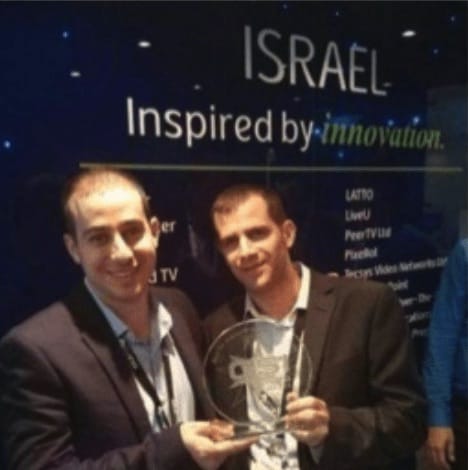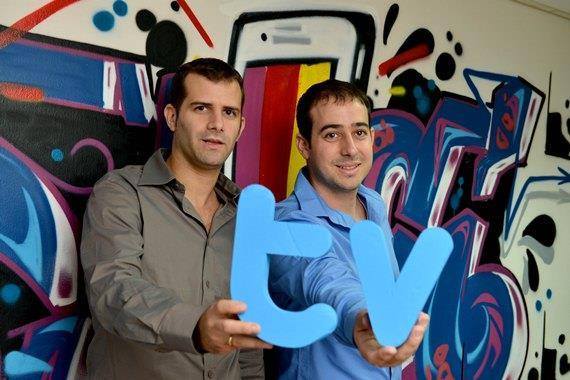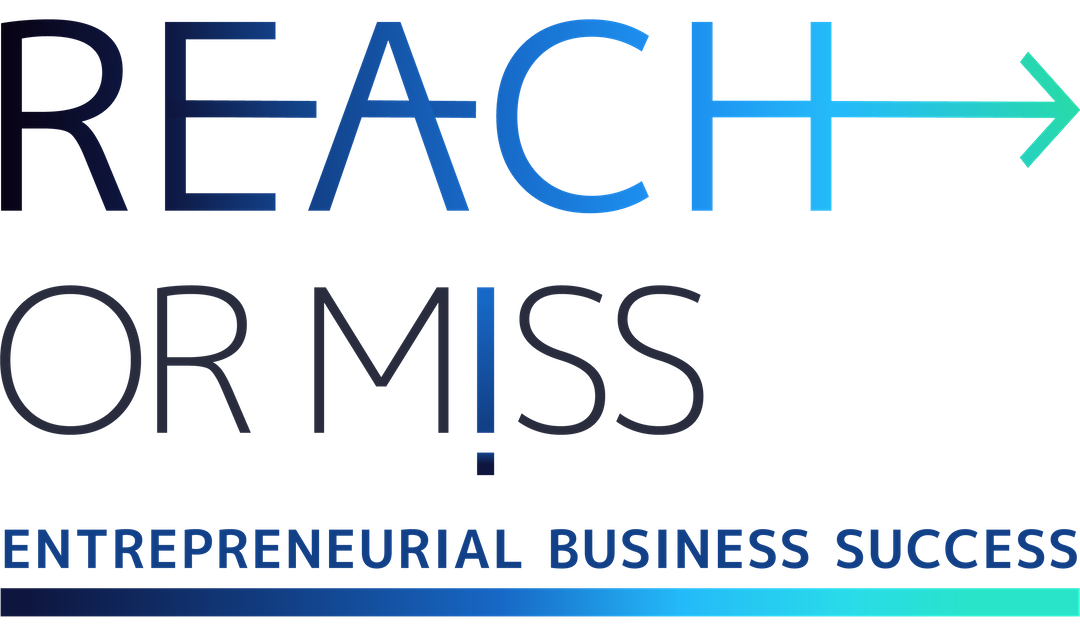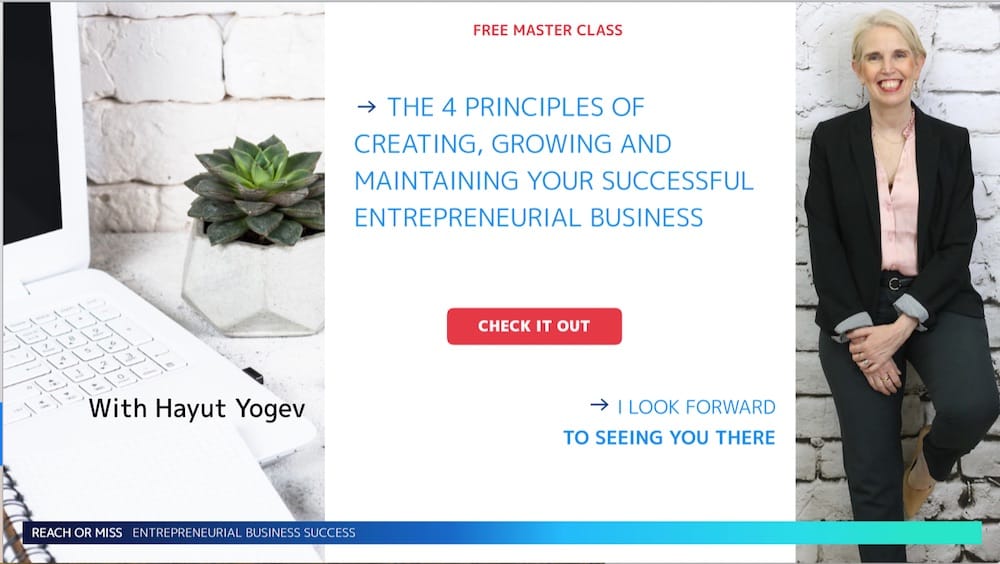What lead this entrepreneur to the big success of his first startup?

What lead this entrepreneur to the big success of his first startup?

Tvinci winning “Best TV Everywhere /Multi-Screen Service” at the CSI Awards 2013 at IBC
I interviewed Ofer Shayo for my podcast lately. Ofer was the co-founder and CEO of tvinci, that was acquired by Kaltura in 2014 and he is one of the very few successful entrepreneurs in my show that I had the privilege to work with.
Today he is based in London with his family and is starting to build a new tech company.
The three drivers behind Tvinci’s remarkable success
Ofer mentioned three main things as the leading drivers behind Tvinci’s remarkable success and advised new entrepreneurs to build a talented, strong team and to focus on defining the right strategy in the beginning.
Building a powerful team
Our bigger success, Ofer said, was building a powerful team and being able to choose the right people, and most of them came without early experience. After five years we sold the company, and these people are very successful. And I’m proud that we managed to put all these brains together to build it.
When the company was acquired, we had 75 full-time employees after seven years of being an active company. And I must say that even with the exit, the thing that I cared most about was taking care of the employees, and that meant the most for me. The fact that we managed to impact the lives of our people and help them with their career.
I think this is really a privilege for an entrepreneur. Being able to impact your teams, develop them, and keep them happy. And I think we did a good job and I’m very proud of it.
Focus on the right market strategy from the beginning
In addition to that and as a result of the work we did with you from 2009 to 2011, was the fact that we decided in a very early stage what category are we going to lead. We recognized that it’s going to be OTT (Over The Top) Pay TV.
We believed that in the close future people would actually consume TV content from… the internet. This is exactly what happened! And most of our prospects said it would only be a nice-to-have, or that it would be only for short forms, only for marketing, etc. It took us time to find the market fit.
Our early strategy was to focus on big customers with premium content. They believed they would serve their customers through the internet. This is exactly the same strategy that Kaltura has today for the group that is built on the amazing company that they bought from us five years ago.
The customer at the heart of any business move
Both, the biggest failure of the company as well as the biggest success, are the direct results of an uncompromising focus on the customers.
The biggest failure with a customer
We made many mistakes. We tried not to repeat them. Our biggest mistake was overselling. We didn’t set expectations with our first customers. There were a few customers that were really excited about our solution, about our vision, about the team, and about the user experience they were going to get. And they got it – but, sometimes they got it a bit later, sometimes they got it with fewer features than they expected, and it took us time to close the gap and deliver the systems.
It was always very important to us to deliver what we promised, but you have to understand, it really was the early days of Over The Top TV.
But we definitely lost customers because of the lack of setting the expectations in the early days.
The biggest success
From the beginning, we had the courage to approach tier one communication companies in North America and demonstrate the new solution to them.
We were lucky to win our first customers in APAC, competing with a “small company” called Erickson. They were a very big communication integrator, and they fail to deliver in this field of OTT. The guy that managed the OTT service for this giant media company decided to bet on us.
The entire company at that time was focused on this project to make sure we would give this giant customer tier 1 service like they expected to get from Erickson. He knew we were a small company; maybe he thought we had more employees than we really had. We were 35 employees by then, and with this project, we managed to double our team in six months.
And that was the point where we were no longer a small startup but a solid relatable startup that had managed to sign big tier 1 and 2 customers. At that point, we really understood we were on the right path.
The story of Tvinci
I met Ido Wiesenberg, my Tvinci co-founder, while we were on a trip walking on a mountain in Guatemala, and we talked about the opportunities for connecting Mobile, TV, and PC, the “holy triangle,” and that was in 2004.

We were both students originally from Israel. When we came back, I joined the business Ido established a few years earlier as co-CEO. It was a kind of creative agency.
After a few years together, we reached some really big customers in Israel and outside of Israel. We decided that we wanted to build a product company. We made a clear decision that it would be in the video space.
This was right after Google acquired YouTube in 2006. We did some business research, and we built a sort of demo: a proof of concept of a kind of interactive player with social layers above it.
We shared it with a few prospective customers. One of them was Wacom in Israel. They liked it, they adopted it, and we built a product around it. We branded it as Tvinci, and we raised our seed money.
At the beginning of 2008, we already had a few customers, including Wacom.
The name came through our third co-founder Guy Barkan. In the beginning, we thought we are reinventing the TV, and the first entrepreneur in the world was Leonardo De Vinci so together it’s Tvinci.
The product was a white label of Netflix. We approached mobile operators, TV cable operators, and media companies and allowed them to build their own TV business on the cloud.
Looking for the next entrepreneurship
I’m now in the Avery structured ideation process to find an innovative idea and establish a new company with my current co-founder, Ofer said.
I want to be able to compare a few ideas, to make sure they have a big enough target market, and that we can lead the market in terms of the competition in a market that hasn’t been destructed so far.
I have a few parameters on my list at the end of the process. I will choose an idea that most likely will be my day job for the next five to seven years.

